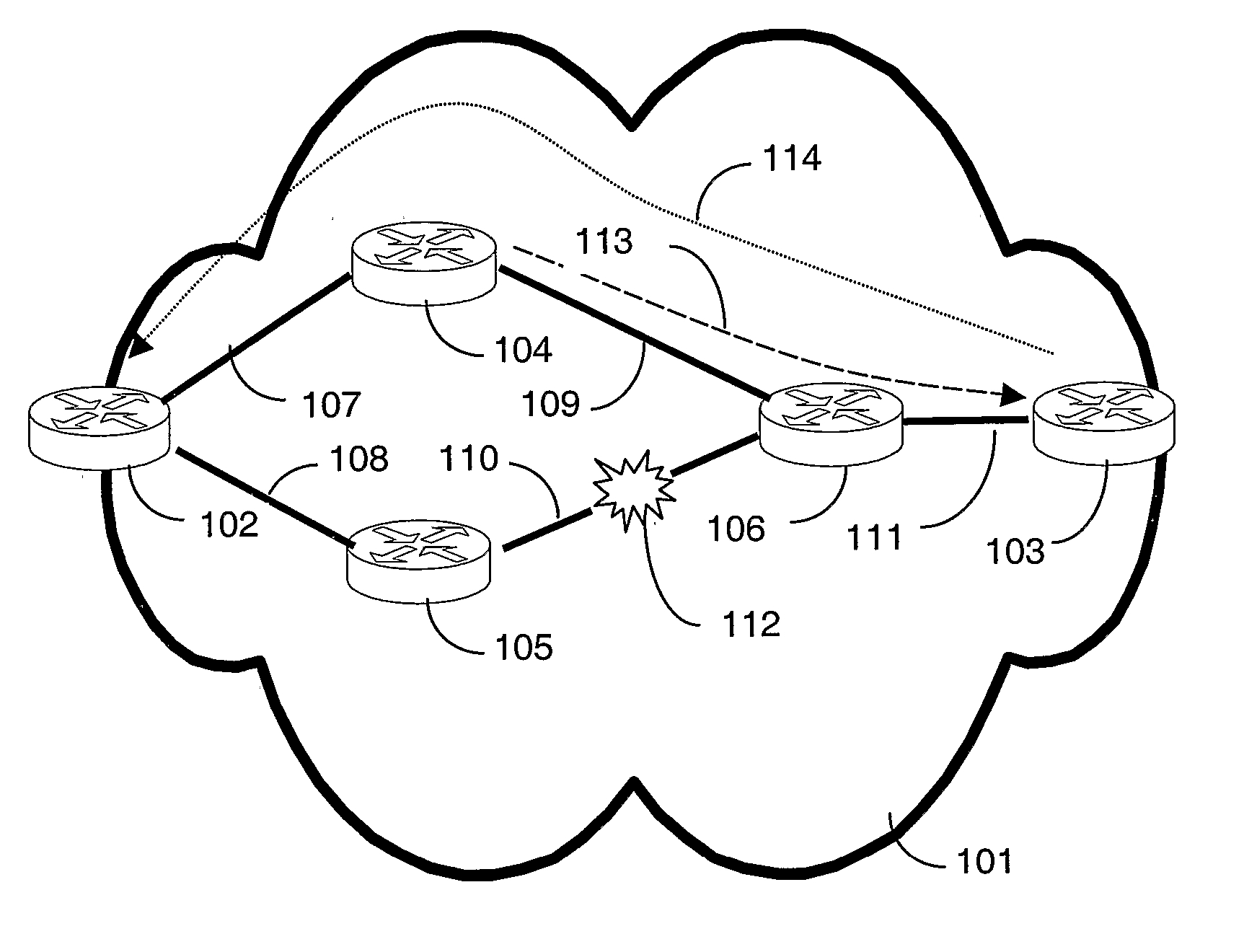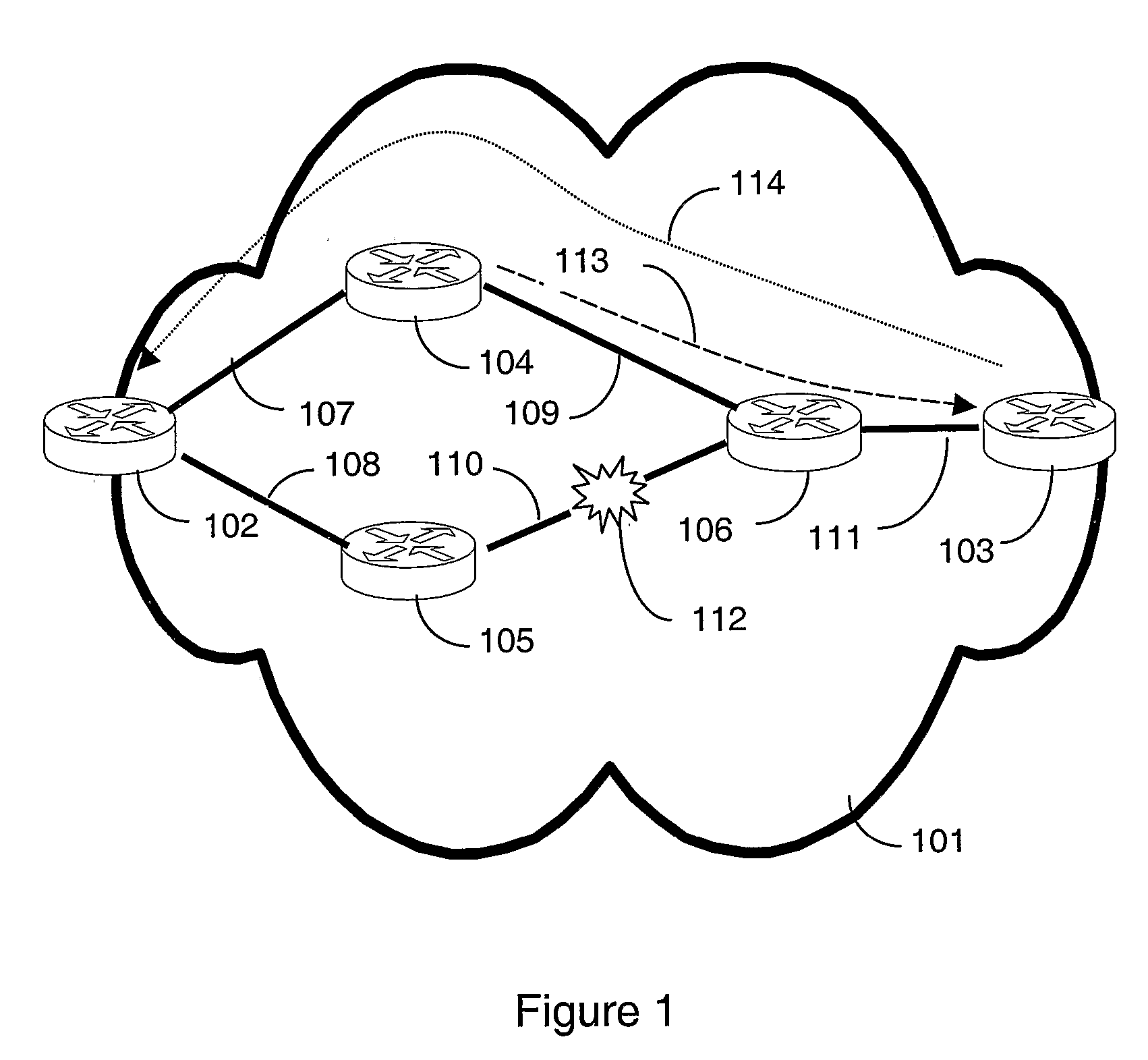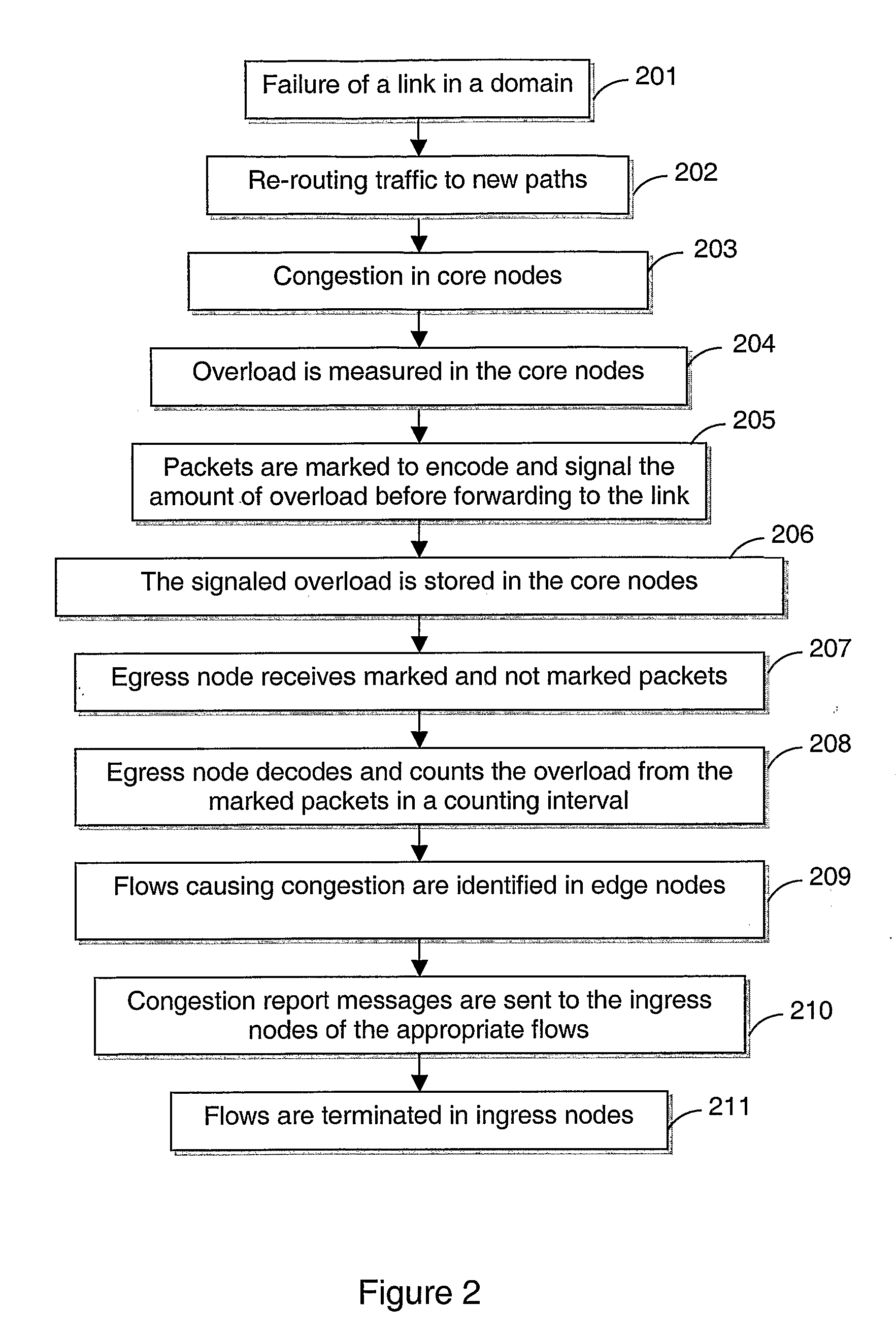Congestion Handling in a Packet Switched Network Domain
a packet switched network and domain technology, applied in data switching networks, high-level techniques, frequency-division multiplexes, etc., can solve problems such as inability to handle faults, severe congestion considered undesirable, and nodes located on this new path may become overloaded, so as to achieve effective link utilization and less flow termination
- Summary
- Abstract
- Description
- Claims
- Application Information
AI Technical Summary
Benefits of technology
Problems solved by technology
Method used
Image
Examples
Embodiment Construction
[0027] In FIG. 1 an example of a domain 101 in an IP network is illustrated. The domain 101 consists of edge nodes 102, 103 and core nodes 104, 105, 106 and links 107, 108, 109, 110, 111 between them. Ingress 102 and egress 103 nodes are edge nodes in the domain 101, handling per flow information while core nodes 104, 105, 106 store only aggregated information, typically per traffic class aggregated information. Normal operation and operation in case of loss of signaling for such a system are described for instance in A. Császár et al.: “Severe Congestion Handling with Resource Management in DiffServ on Demand”, in proceedings of the Second International IFIP-TC6 Networking Conference, Networking2002, pp. 443-454, May 2002, Pisa, Italy. Here only a new congestion handling solution is discussed.
[0028] In case of link failure 112, for example, routing algorithms in IP networks will adapt by changing the routing decisions taking into account the topology and traffic volume. As a resul...
PUM
 Login to View More
Login to View More Abstract
Description
Claims
Application Information
 Login to View More
Login to View More - R&D
- Intellectual Property
- Life Sciences
- Materials
- Tech Scout
- Unparalleled Data Quality
- Higher Quality Content
- 60% Fewer Hallucinations
Browse by: Latest US Patents, China's latest patents, Technical Efficacy Thesaurus, Application Domain, Technology Topic, Popular Technical Reports.
© 2025 PatSnap. All rights reserved.Legal|Privacy policy|Modern Slavery Act Transparency Statement|Sitemap|About US| Contact US: help@patsnap.com



